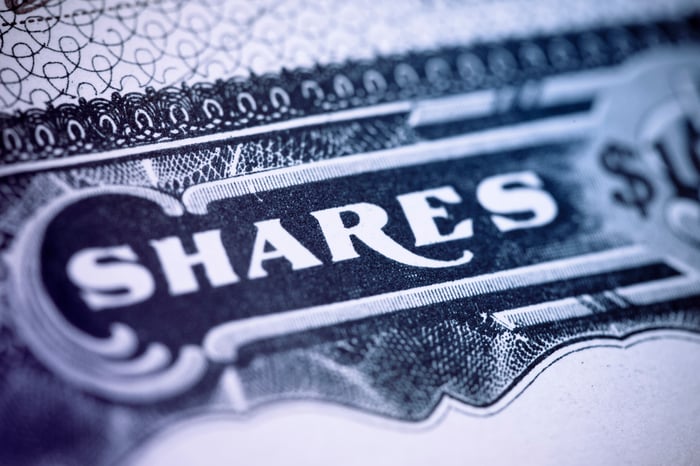No event has been more anticipated in 2024 than Election Day. With current President Joe Biden stepping aside, it was a certainty that someone new would lead our great nation forward over the coming four years.
Although not every aspect of the legislative process has relevance to the stock market, elections do, ultimately, determine which elected officials will shape fiscal policy on Capitol Hill. While some aspects of Election Night are still being determined, as of the time of this writing on Nov. 6, the biggest question of all has been answered: Who will be president?
In the early morning hours on Wednesday, Nov. 6, the Associated Press called the election for the former president and now President-Elect Donald Trump.

Former President and President-Elect Donald Trump delivering remarks. Image source: Official White House Photo by Joyce N. Boghosian.
Policy questions remain as Trump prepares for his second term
During Trump's first term as president, which ran from his inauguration on Jan. 20, 2017 through Jan. 19, 2021, the stock market performed exceptionally well. The ageless Dow Jones Industrial Average (^DJI 0.92%), broad-based S&P 500 (^GSPC 0.53%), and growth stock-propelled Nasdaq Composite (^IXIC 0.22%) respectively rose by 56%, 67%, and 138%.
But the latter half of Trump's presidency was also characterized by the initial stages of the COVID-19 pandemic, which resulted in historically low interest rates and rounds of fiscal stimulus from the federal government. This is to say that trying to compare what happened in his first term to what may occur in the second is night-and-day different.
While Wall Street's post-election reaction was resoundingly optimistic, policy questions and concerns do remain.
For example, President-Elect Trump has stated that he'd like to institute tariffs on goods imported into the U.S. Goods imported from China, the world's No. 2 economy by gross domestic product, would face a 60% tariff under Trump's proposal, while goods imported from all other countries would endure a tariff of up to 20%.
The purpose of tariffs is to promote domestic production and make American-made products more price-competitive with goods being imported into the United States. However, tariffs can have unintended consequences. Specifically, they can increase costs for consumers and businesses, as well as worsen trade relations with China and our allies.
There's also concern about America's rapidly rising national debt. With Donald Trump favoring low tax rates for corporate America and working Americans, it raises the question of what, if any, progress will be made in reducing the federal deficit during his second term in the Oval Office.
Yet in spite of these unknowns, Trump reclaiming the White House paves the way for a multitrillion-dollar investment to deliver for Wall Street.

Image source: Getty Images.
Donald Trump's victory can be a mega-catalyst for this multitrillion-dollar investment
I know what you're probably thinking, and I'm not talking about artificial intelligence (AI). Although the analysts at PwC believe AI will add $15.7 trillion to the global economy by 2030, it's not yet clear if the incoming Trump administration will aid or hurt the AI revolution.
While most everything is speculation at this point, one of the few aspects of a Trump presidency that's effectively a given is that the corporate income tax rate isn't going to climb. During Trump's first term, his flagship Tax Cuts and Jobs Act (TCJA) permanently reduced the peak corporate income tax rate to 21%, which is the lowest it's been since the late 1930s. Though Democratic Party presidential nominee Kamala Harris had proposed increasing the corporate income tax rate by 33%, this is now off the table with a Trump victory.
If the corporate income tax rate remains at eight-decade lows, there's a lot Wall Street's most-influential businesses may be able to do with their extra cash. There's the possibility of added hiring, increased research and development, and even acquisitions.
However, the biggest impact of a Trump presidency, in my view, will be seen in stock buybacks.
Prior to the passage of the TCJA, quarterly-stock repurchases by S&P 500 companies had regularly vacillated between $100 billion and $150 billion, in aggregate, between 2011 and 2017. But once the TCJA lowered the corporate income tax rate from 35% in 2017 to the current 21% in 2018, it became a green light for America's most-influential businesses to repurchase their stock.
Excluding the very early stages of the COVID-19 pandemic, which saw some businesses halt or substantially pare back their share-repurchase programs, quarterly-buyback activity for S&P 500 companies has regularly ranged from $200 billion to more than $250 billion per quarter. In short, buyback activity has grown by 50% to 70% on a pre-versus-post TCJA basis.
Admittedly, this is a correlative analysis and doesn't guarantee that businesses will continue dumping copious amounts of cash into stock buybacks during President-Elect Trump's upcoming term. Then again, history has a way of rhyming on Wall Street.
AAPL Stock Buybacks (Quarterly) data by YCharts.
According to data from S&P Global, S&P 500 companies bought back $235.9 billion worth of their own stock during the June-ended quarter, which works out to more than $943 billion on an annual run-rate basis. Over the trailing-10-year period (ended June 30, 2024), S&P 500 components have repurchased $7.03 trillion worth of their company's stock, led by Apple ($687.2 billion), Alphabet ($271.4 billion), Microsoft ($195 billion), and Meta Platforms ($173.8 billion).
The reason buybacks are so popular is because they can help boost a company's earnings per share (EPS) and make its stock more fundamentally attractive to investors. Companies with steady or growing net income and a declining outstanding share count will see their EPS grow over time. Apple, for instance, has reduced its outstanding share count by more than 42%, which has had a noticeably positive impact on its EPS.
With potentially $1 trillion or more in buybacks being undertaken annually by S&P 500 companies during Trump's second term, there's a real possibility of this multitrillion-dollar investment sending stocks to new heights.






